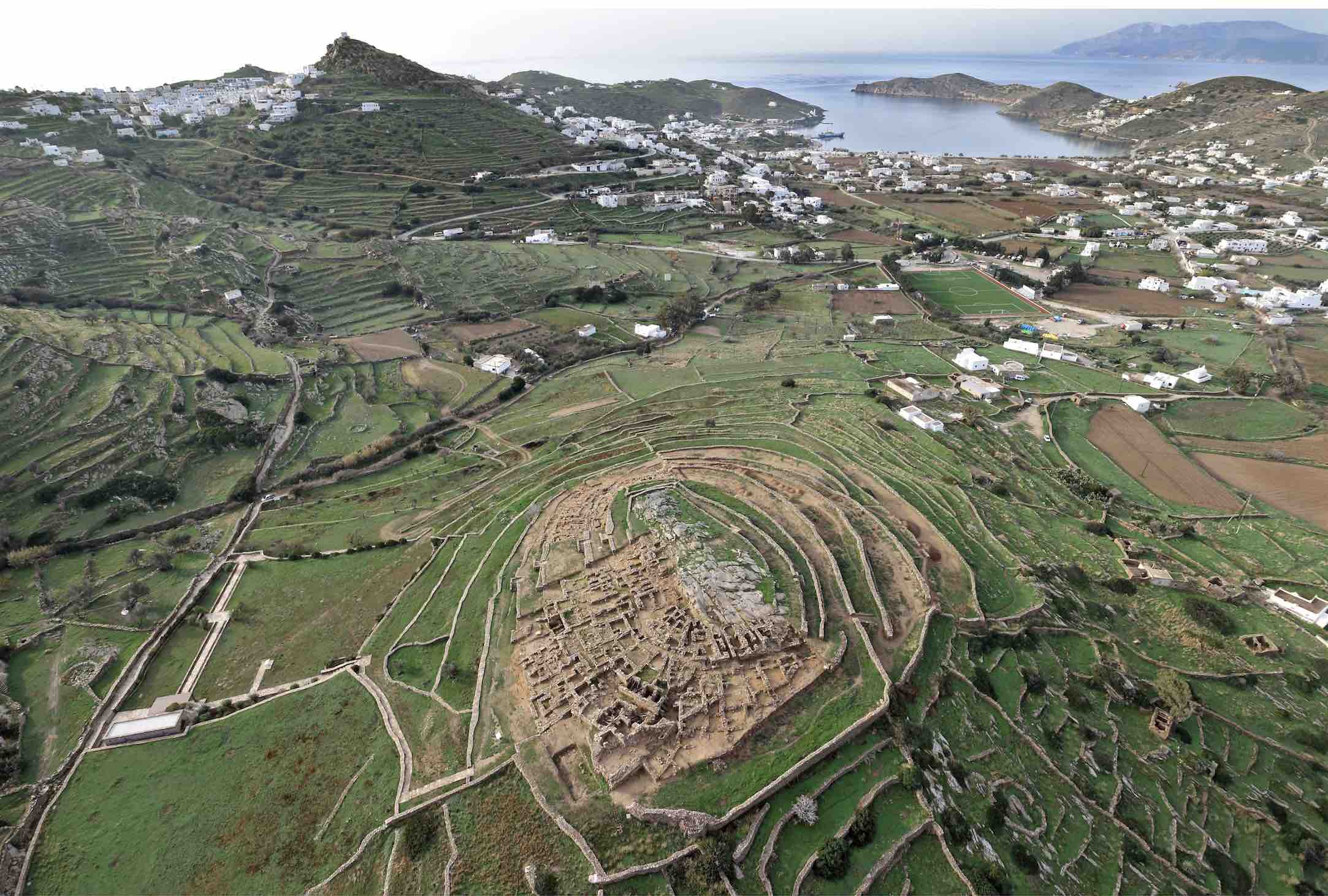
- This event has passed.
Marisa E. Marthari, The Early Cycladic Site at Skarkos on the Island of Ios

The site of Skarkos stands in an advantageous position on a hill in a coastal plain, mid-way down the western side of Ios and in proximity to one of the largest sheltered harbors in the Cyclades. The excavations conducted by the author brought to light a multiperiod prehistoric site and, most significantly, a settlement of the Cycladic Early Bronze Age II (mid-3rd millennium BC, Keros-Syros Culture) the remains of which predominate on the hill. More than one-third of this settlement has been excavated mainly in the last fifteen years. The walls of the buildings are preserved to a maximum height of 4 meters. This unique state of preservation helps to understand the layout, architecture, and structures of settlements in the Cyclades during the peak of the Early Cycladic world. The settlement has a well-organized plan, with wide streets and squares, two-story rectangular buildings and a complicated drainage system. In the area excavated so far, 10 insulae and 55 buildings have been uncovered. Skarkos developed agricultural, craft and trading activities. Craft specialization is particularly evident in the settlement. Various skilled craftsmen must have been active, among them masons, potters, obsidian specialists (tool makers) and marble-carvers. Indeed, the evidence demonstrates that Skarkos was a considerable marble-working center. Luxury and/or prestige objects, such as marble figurines and fine vessels, were produced there and circulated in the Aegean exchange networks in which Skarkos participated. Two marble workshops were excavated. Furthermore, the seals, the large number of terracotta seal-impressed cubic objects, and the seal-impressed pottery found at the site leave no doubt that seal-stamping was a common practice at Skarkos. It appears that, in some circumstances, a statement of ownership or personal identity was useful or necessary.
Dr. Marisa E. Marthari is Ephor of Antiquities (Emerita) at the Greek Archaeological Service and director of the excavations at Skarkos on Ios , the largest known Early Cycladic II (Keros -Syros culture) settlement, and Kastri on Syros, a fortified Early Cycladic settlement, the last under the aegis of the Archaeological Society at Athens. She also has a long standing academic association with the excavations at the prehistoric town of Akrotiri on Thera. Marthari was formerly Director of the Ephoreia of Prehistoric and Classical Antiquities for the Cyclades and Samos, regions where she conducted numerous excavations and directed projects on museum exhibitions and presentation of archaeological sites including that at Skarkos on Ios, winner of the 2008 European Union Prize for Cultural Heritage / Europa Nostra Top Prize for Conservation (GRAND PRIZE). She was P.M. Warren Visiting Professor in Aegean Prehistory at the University of Bristol, Institute of Greece, Rome, and the Classical Tradition (2012-2013) and visiting fellow at the University of London, Institute of Classical Studies (1984-1988), and the Kommission für Allgemeine und Vergleichende Archäologie (CAVA) in Bonn (1988-1989). She served as member of the Committee of the European Bronze Age Campaign of the Council of Europe at Strasbourg (1993-1997). Marthari presented more than 80 papers and public lectures in Greece, Europe (Britain, Germany, France, Italy, Switzerland and Austria), Cyprus, Turkey, the United States and Canada. She has published widely on Late Bronze Age Theran pottery, Cycladic prehistory and archaeological heritage issues. Most recently she is co-editor of Early Cycladic Culture in Context (London 2017) and Beyond the Cyclades: Early Cycladic Culture in Context from Mainland Greece, the North and East Aegean (London 2019).
This lecture is co-sponsored by the UCLA Cotsen Institute of Archaeology
